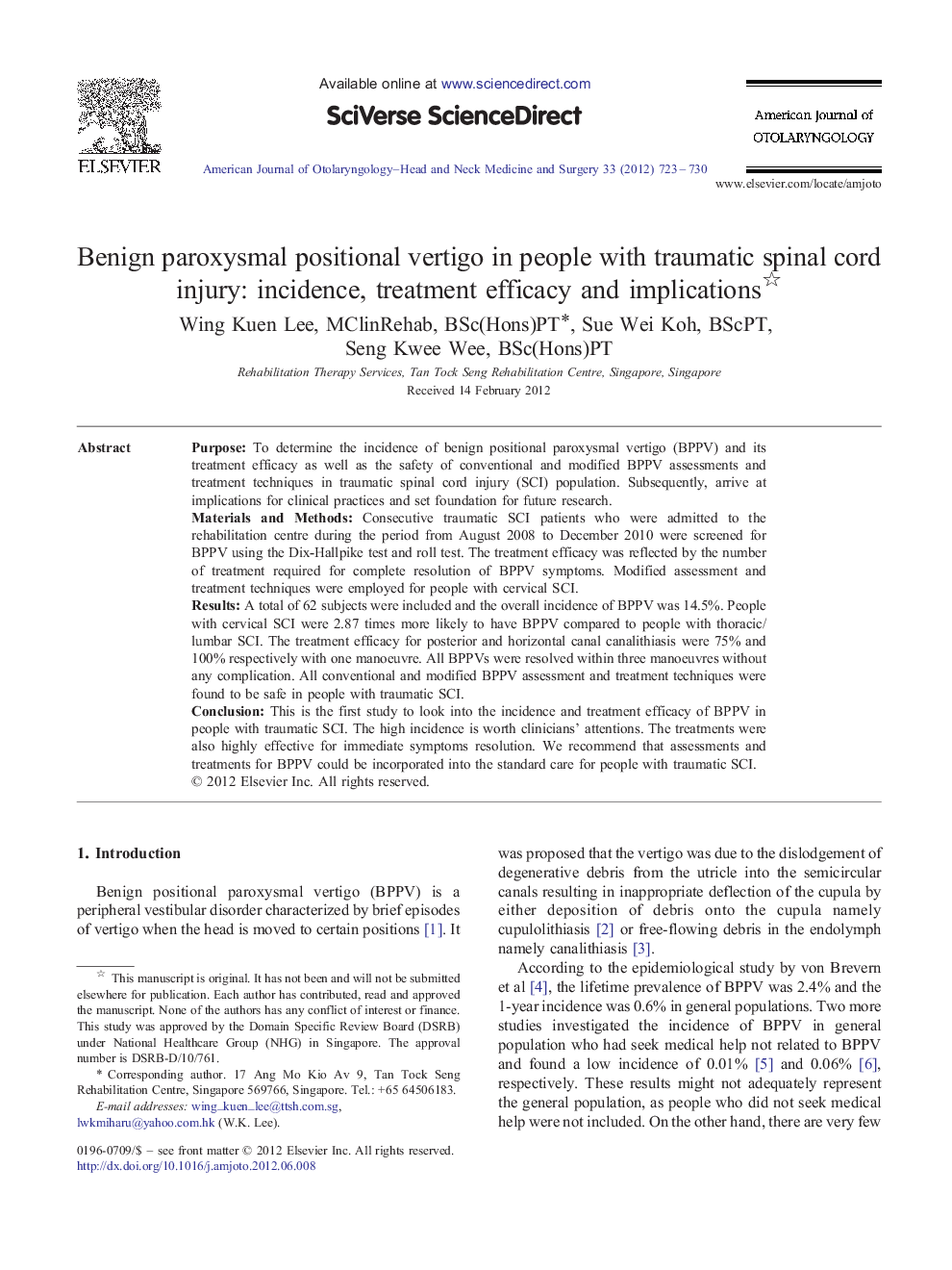| Article ID | Journal | Published Year | Pages | File Type |
|---|---|---|---|---|
| 4103321 | American Journal of Otolaryngology | 2012 | 8 Pages |
PurposeTo determine the incidence of benign positional paroxysmal vertigo (BPPV) and its treatment efficacy as well as the safety of conventional and modified BPPV assessments and treatment techniques in traumatic spinal cord injury (SCI) population. Subsequently, arrive at implications for clinical practices and set foundation for future research.Materials and MethodsConsecutive traumatic SCI patients who were admitted to the rehabilitation centre during the period from August 2008 to December 2010 were screened for BPPV using the Dix-Hallpike test and roll test. The treatment efficacy was reflected by the number of treatment required for complete resolution of BPPV symptoms. Modified assessment and treatment techniques were employed for people with cervical SCI.ResultsA total of 62 subjects were included and the overall incidence of BPPV was 14.5%. People with cervical SCI were 2.87 times more likely to have BPPV compared to people with thoracic/ lumbar SCI. The treatment efficacy for posterior and horizontal canal canalithiasis were 75% and 100% respectively with one manoeuvre. All BPPVs were resolved within three manoeuvres without any complication. All conventional and modified BPPV assessment and treatment techniques were found to be safe in people with traumatic SCI.ConclusionThis is the first study to look into the incidence and treatment efficacy of BPPV in people with traumatic SCI. The high incidence is worth clinicians’ attentions. The treatments were also highly effective for immediate symptoms resolution. We recommend that assessments and treatments for BPPV could be incorporated into the standard care for people with traumatic SCI.
